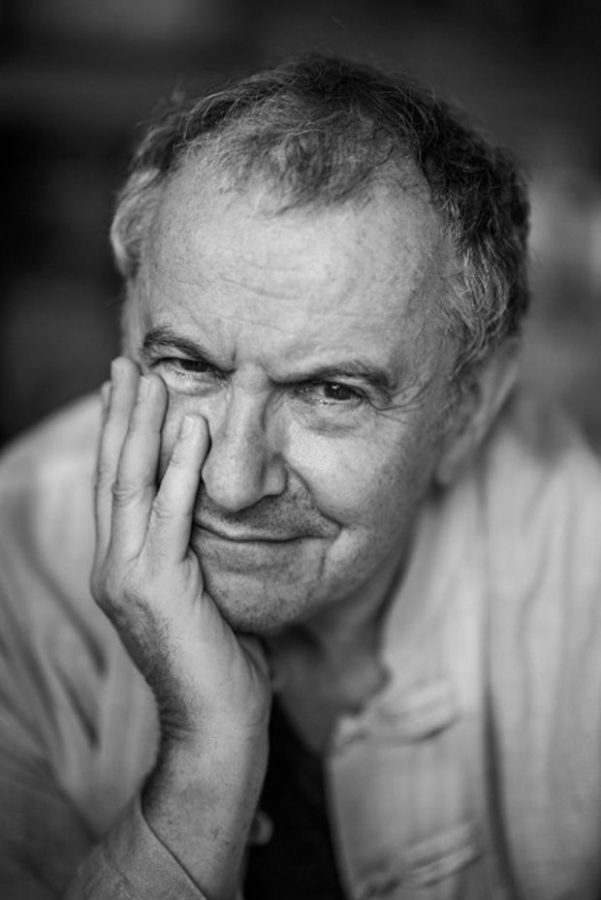Holocaust survivor will be honored for innovative photography
Published November 16, 2017
The International Photography Hall of Fame and Museum in the Grand Center Arts District will induct nine photographers on Nov. 17. Inductees are selected for artistry, innovation, and significant contributions to the art and science of photography.
One of the class of 2017 inductees who will be in St. Louis for the ceremony is Ryszard (pronounced Reh-SHARD) Horowitz. At 78, he continues to break ground in photography with his creative photo compositions. He is a pioneer in multiple image layering and special effects. Horowitz was born in Krakow, Poland, and during World War II his family was interned in a series of concentration camps. He is one of the youngest known survivors of Auschwitz and to be listed on Schindler’s List.
Horowitz offered the St. Louis Jewish Light a bit of insight into his creative process during a recent conversation.
You’ve received many accolades and honors in your career. What is significant about being inducted into the International Photography Hall of Fame?
Well, it’s the 50th anniversary of the opening of my New York studio, so this a very nice coincidence. I treat it as a kind of cherry on top of the cake. Very sweet.
You picked up a camera for the first time when you were about 10 years old. When did you recognize that photography would become a prominent part of your work?
I was in my early 20s in New York when I worked for a great ad agency called Grey Advertising. I was quite successful as an art director, and I found myself in a position to give assignments to other photographers. I soon became very frustrated with the job and wanted to do photography myself, and slowly I started taking small steps in that direction. It took me a while before I was able to open my own space, but at that time I was already certain that I would continue as a photographer instead of continuing with graphic design.
How did you learn the craft?
I’m self-taught. I never studied photography. I was trained as a painter. I graduated from Pratt Institute as a graphic designer. Photography has been my hobby ever since I was a little kid, so I simply follow my own gut instincts. My greatest influences came from really great painters rather than photographers, and I always say if you want to learn about photography, you can do it by studying fine art.
Some of your photographic compositions seem pretty complex. How much planning goes into your work?
Well, coming from fine art, I know how to draw and make sketches, so I take my pencil and a pad of paper and draw things, but generally I go back to being prepared before I begin a particular project. I don’t rely too much on accidents, although they can be helpful.
What is the creative process like when you are composing a photograph?
When you deal with many images and put them together in a single environment, a single space, it’s important to be aware of many things, such as lighting, color, form. I’m mostly dealing with the concept, and I want to make sure the concept is solid. I collect whatever images I need. They’re all my photographs, and I always wanted to learn how to light objects and use the right lighting conditions. Many of my compositions from the 1960s and 1970s were created in my darkroom or in the camera. I developed all kind of gadgets to blend images together. I developed a number of darkroom techniques to enable me to combine many images into one single image.
How do you know when an image is just right?
It’s like a painter. When you work on a computer, you can work on an image forever, moving elements around. Eventually, you come to a point when you know it’s time to stop. It requires a bit of planning so any changes are fairly time consuming. I am much more aware of that and plan everything in advance. I’m a pretty good judge when I work on something to know this is it.
You’ve photographed a number of jazz legends, including Dave Brubeck, Louis Armstrong, Count Basie and Duke Ellington. How did you become interested in music?
I grew up in Poland under communism. Jazz was a window to freedom and escape and hope. I listened to a radio program called “Jazz Hour,” which was broadcast in Eastern Europe. In 1958, Dave Brubeck came to Poland with his quartet, and I was at his concert so I took some photographs. Later, I was introduced to him, and he remembered the event and he liked my pictures. He helped me create a book called “Jazz” that combines the best images from that period. Brubeck wrote the introduction. That book will be available at the International Photography Museum bookstore.
Do you see any parallels between the creative process in photography and music?
I coined the expression “photocomposer” and I didn’t know whether anyone would understand it, but fortunately people do. I always say that combining images is very similar to what a music composer does, putting together different sounds. You can take a lot of different pictures and combine them into something that’s harmonious. There’s a very close relationship philosophically between what I do and what a music composer does.
















